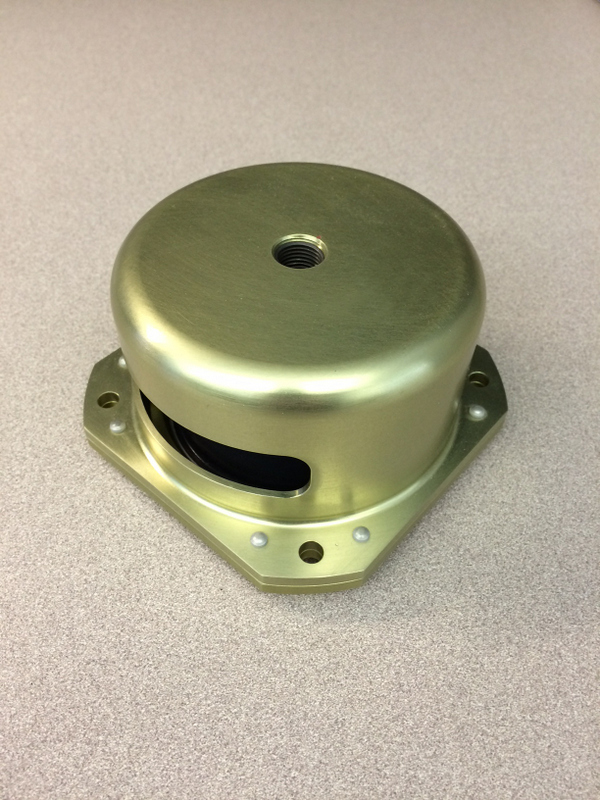Get the balance right

According to Jeffrey Ley, P.E. manager, Fixed Wing Engineering of LORD Corporation, today’s aero engines require a more sophisticated approach beyond traditional stiff and rigid mounting options, as well as attention to the sum of all the systems.
As is the case with most technological advances, improvements in one area often impact key design considerations or factors that must be analysed in other areas of the platform.
Such is the case for today’s aircraft engine design, test and analysis. Fan sizes are increasing and engine core sizes decreasing to support the industry’s need for higher performance and efficiency and lower fuel consumption and emissions.
However, while the engines are becoming more efficient, the impact of potential failure events, such as Fan Blade-Off (FBO) and Windmilling imbalance (and the subsequent vibratory load on the structure), will become an even more important design consideration, holistically across all of the aircraft systems. In short, while this failure mode has always been an important design consideration for the platform, the increasing fan size of the next generation of engines will exacerbate the effects from these rare but real events.
The FBO and subsequent Windmilling imbalance occurs after a fan blade is partially or fully lost during flight and the incoming airflow continues to rotate the fan after engine shutdown. Not only does the violent event destroy the engine, but the resulting imbalance and vibration can have a drastic impact on the platform structure itself and other systems in the aircraft, such as the APU, electronics, HVAC system and more.
This potential event becomes one of the principle considerations driving structure size, material selections and design configuration. While the design response in the past was typically about containment and managing the load, usually through stiffening the structure, that approach will not necessarily work well if one is trying to maximise the efficiency gains of the new engine technologies.
Isolating vibration
The first line of defence is obviously addressing the event as close to the source as possible through the use of engineered Engine Attachment Systems (EAS). As the loads become more significant, consideration of the EAS is key, including building compliancy into the mount system. Employing compliancy is one way to isolate the aircraft structure from the engine vibration; with careful analysis, employing damping can also provide significant benefits.
Although conventional springs and hard mounts have worked well in the past, and the first inclination is to make things stronger and therefore stiffer, such an approach does not satisfy requirements for performance. In fact, more rigid designs can actually exacerbate the problem as well as add weight. Isolation and softening, if done properly, can help alleviate the loads on equipment and structure. The result is weight reduction and/or improved margins of safety, or, as is more often the case, a combination of the two.
The use of compliancy
The following example is a scenario in which the oil tank for a large commercial aircraft engine was hard-mounted. Under the high FBO and Windmilling loads, a failure of the oil tank attachment was determined, which could result in a crack initiation/propagation of the tank structure, causing a fire risk. Due to other design requirements (i.e., deflection control), it was not possible to isolate the oil tank from the engine with soft mounts under normal operation.
Therefore, a mount was developed to resolve this, which in its primary mode, functioned as a hard mount during normal operating loads. However, during a high-load event, it would become soft and provide isolation of the oil tank, reducing the vibration loads (a ‘fused’ design). The implementation of this novel design mitigated the failure risk and avoided the need to increase the structural robustness of the tank and hence the weight.

While a carefully designed EAS can help mitigate the impact of high load failure events at the source, other technologies are also needed to mitigate the impact that Windmilling can have throughout the entire aircraft and the systems and components therein. This is where a collaborative approach is vital. Success depends on the design team being able to accurately see how all the systems come together, looking at vibration mitigation across the entire aircraft. It is important to work with a supplier experienced in analysing the impact of an event, as well as the effects on the entire aircraft, not simply the consequences for its component.
Although analysing FBO events is typically performed by engine manufacturers, suppliers should understand and be well-versed in the potential impact so that all parameters are accurately represented when the aircraft systems are modelled.
Looking ahead
The aircraft of today and tomorrow require a more sophisticated approach beyond traditional stiff and rigid mounting options, as well as attention on the sum of all the systems. The engine OEMs are working diligently on this issue, yet it is clearly a consideration for all parties. Exploration of isolation and non-linear spring effects (compliancy), controllable damping and other technologies needs to occur to keep crews and passengers safe and comfortable. Although one cannot change the laws of physics, the right supplier will know how to use them to its advantage.













